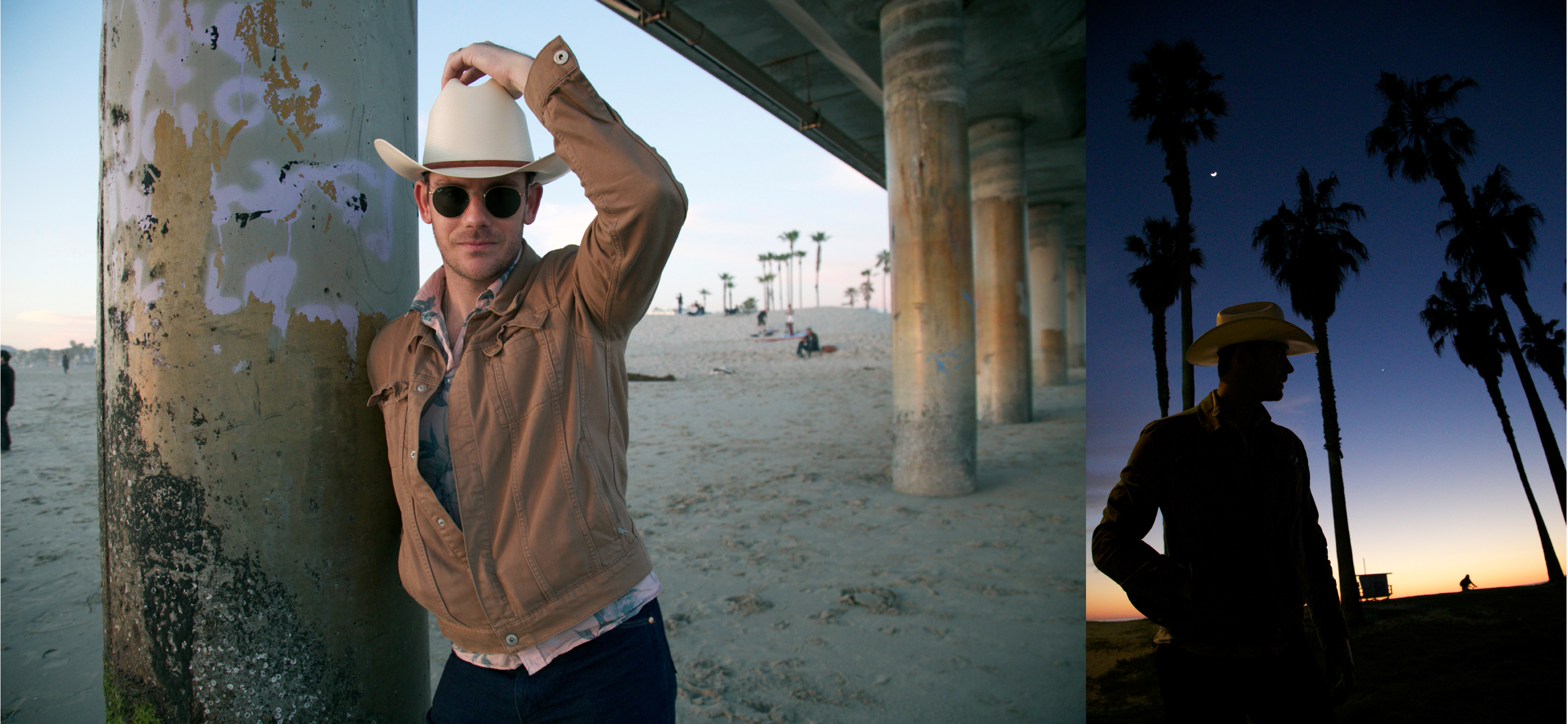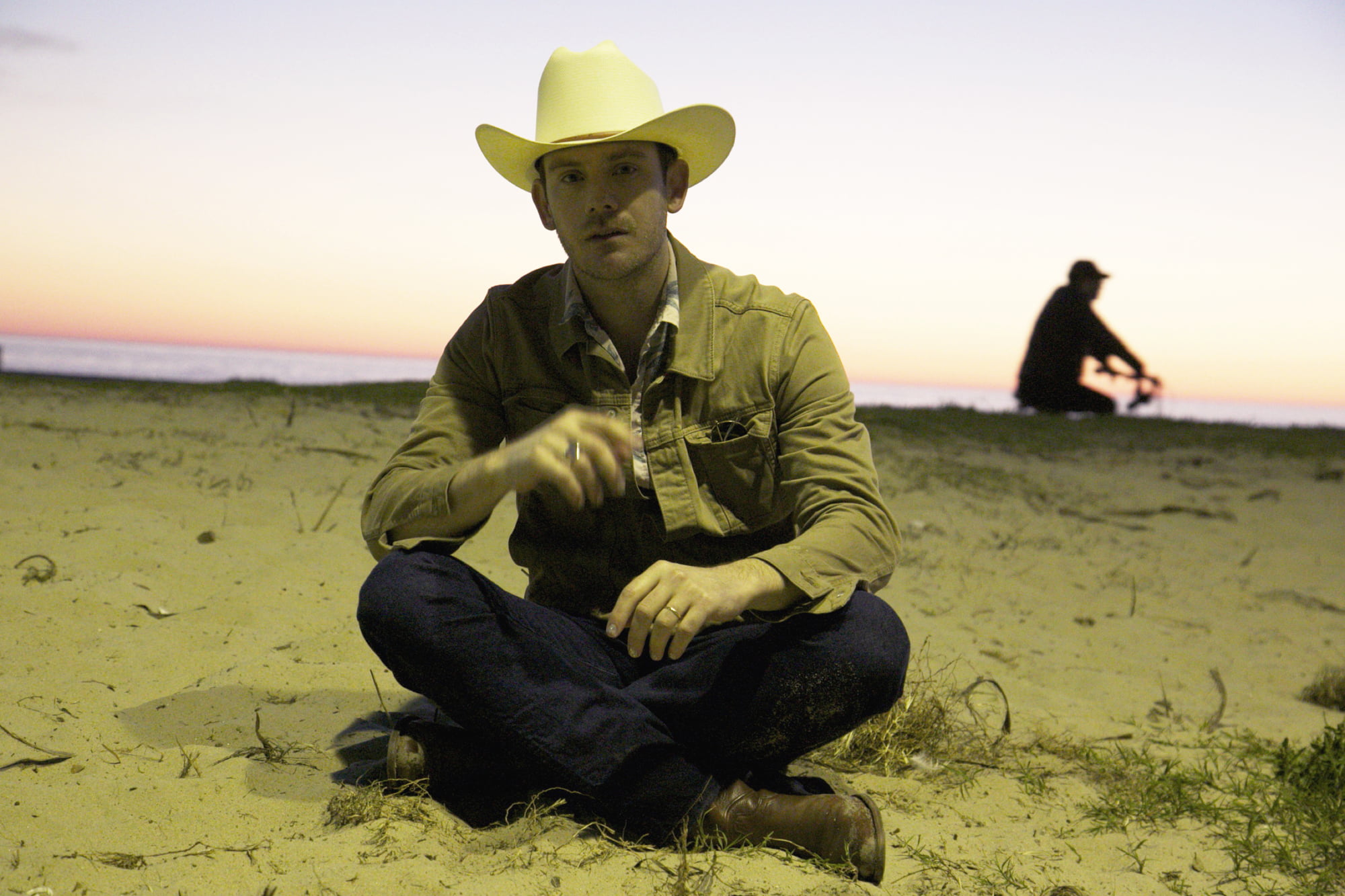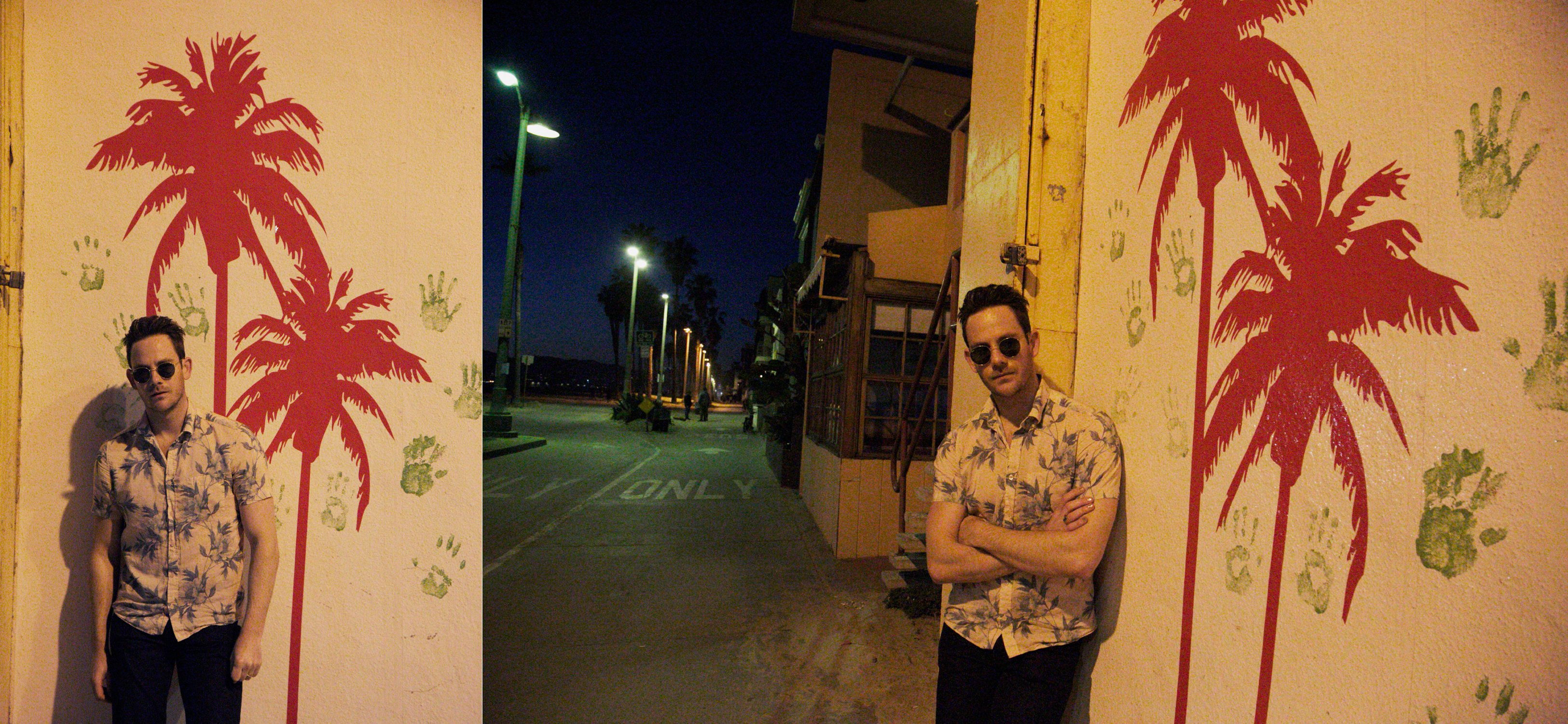Enter to win a pair of tickets to Blackberry Smoke at the Fonda Theatre in Los Angeles on July 25.
Enter to win a pair of tickets to Blackberry Smoke at the Fonda Theatre in Los Angeles on July 25.
Enter to win a pair of tickets to see the Avett Brothers at the Greek Theatre in Los Angeles on August 11.
Enter to win a pair of tickets to Turnpike Troubadours at El Rey Theatre in Los Angeles on August 3.
Enter to win tickets to Billy Currington at the Fonda Theatre in Los Angeles on August 9.
Artist: Dead Rock West
Hometown: Los Angeles, CA
Song: “More Love”
Album: More Love
Release Date: August 11, 2017
Label: Omnivore Records
In Their Words: “During the spring of 2015, I was sitting on the couch — the windows and doors were open in the house. I was listening to the bustle outside, playing guitar, and wondering about love and if it ever comes back around after slamming the door and leaving bitterly. It was spring time in California and everything — I mean EVERY thing — was in bloom. It was evening time, but not yet dark. There were bullfrog sounds from the L.A. river, birds singing and building nests in the eves above me, children laughing and playing, an ice creams truck’s happy tune blasting through a ragged bullhorn as it moved down the street to greet the kids. In the cool air were smells of jasmine and orange blossom, a feeling of newness was all around: Everything was gonna be alright. In fact, it WAS alright.” — Frank Lee Drennen
Photo credit: Patrick Dennis
Like her appellation, Bedouine (Azniv Korkejian) has wandered far from where she first began. The nomadic impulses beating at the heart of her chosen stage name carried her from her birthplace in Syria to her self-described home in Saudi Arabia as a child and later to the United States, where she continued shuffling from Boston to Houston to Lexington to Savannah, and eventually Los Angeles. But with that kind of existence forming the bedrock of her identity, and the mystery — not to mention magic — of new places constantly calling, what does it take to stay? Nothing really so romantic, really. Just a choice. Thanks to the artistic community she eventually found in her most recent adopted city, Korkejian has sacrificed the wild call of the road to instead see whether or not the old adage about blooming where you’re planted holds salt … for now.
Rather than focus entirely on her wandering ways, her self-titled debut traces the surprising blossom of love for one so used to traveling light. On “Heart Take Flight,” she spends the first meters of each verse allowing her voice to convey its full dusky depth before loosening it to rise to a joyous conclusion. The chorus’s simple maxim, “Heart take flight. I give you every right, when he’s around,” not only encourages mindfulness, but also acts as a kind of permission: “Dive in, it’s okay.” But Korkejian’s lyricism contains an enchanting ephemerality, as if she knew one day she would need to sing these songs to herself. The “you” surfacing throughout the album shifts from lover to self as time carries the message back to the messenger. In “Dusty Eyes,” she ventures forth her feelings, but her declarations feel as much to herself as to anyone who has momentarily captured her heart. “The lampposts burn the night, but they don’t come close. No, they don’t come close to the way that I feel about you now.” If movement involves a process of self-discovery, then Korkejian traces a similar means of self-exploration by choosing where to stay, and for whom. The answer may have initially involved someone else, but by the album’s end, it largely comes down to her.
Written over the course of three years, Bedouine came about after Korkejian heard what Matthew E. White’s Space Bomb studio had done for artists like Natalie Prass. She sent him a demo, and something about the confluence of her lyricism, the space she breathes into every song, and her soporific yet self-assured voice wasn’t so easily brushed aside. It’s easy to hear why on songs like “Solitary Daughter” which reverberates with independence — the kind fought for after years of self-doubt and discovery. “I don’t want your pity, concern, or your scorn. I’m calm by my lonesome, I feel right at home,” she sings. Korkejian’s debut comes in her early 30s, a refreshing place for a new voice to enter the conversation, as she eschews the often-solipsistic questioning that takes place earlier in life, and instead enters quietly yet assertively to offer a different, more internally robust, picture of the wanderer enticed to stay.
How have you curated a sense of rootedness within all the movement you’ve experienced?
I don’t know that I have, to be honest. I love L.A. — I think it’s the closest thing to home that I’ve felt in a really long time. But I think when I left Saudi Arabia as a kid, I had this pent up resentment like, “As long as I’m not there, I may as well be anywhere.” I was pretty intentional with anything I acquired: I wanted to stay light on my feet; I wanted to know I could move myself place to place on the drop of a dime. It’s only recently that I was like, “Maybe I’ll buy some furniture.” I do want to feel at home in L.A., and it’s a current process for me.
Like choice over happenstance.
Yeah, I think so. It’s largely due to the people that I’ve met. They’re so wonderful and talented, and I feel so inspired, and it wasn’t until I moved to L.A. that I pushed myself to be a better writer. There’s no room for mediocracy there. Not to say that I’m so great — I just felt like I got better.
It’s the kind of record that demands attention. I think that’s part of its power: There’s a soothing quality about it.
Thank you. There are times I’m singing and I think I’m singing my heart out in there, and I go back to listen to it and I sound half asleep. It’s just what I know. I don’t know how to sing any other way. Growing up, I loved to sing a little bit more bombastically, but it was always to other people’s music. I don’t think it’s conducive to the kind of song I write, and I’ve learned to accept that — that it’s a different quality.

You’ve drawn comparisons to Judy Collins and Nick Drake, and especially Leonard Cohen in terms of your lyrics’ poetic quality …
Which is totally fine!
Not a bad comparison! So that blend of the poet’s voice — quiet but insistent — alongside the melodic, what are you turning to for guidance? Other writers? Something else?
[Regarding “Solitary Daughter”] The whole thing was so reactionary. It just poured out of me that one night; I didn’t even stop to ask myself what I was trying to say exactly. The language is so figurative, and I leaned into it without interrupting it much. It felt so internal. I don’t think I was reading anything at the time that found its way in, necessarily. It was just a really emotional experience writing it.
I know people have fixated on the claim of solitude you make, but you’ve also said it’s about experiencing a relationship as two whole individuals rather than hoping such a connection will make you whole.
Yeah, I’ve had to backpedal a bit to understand what I was saying. It’s inspired by that quote, “No man is an island.” It’s about empathy and isolation, and here I am singing this song that says like, “Leave me alone, leave me alone.” I had to dig a little deeper, like “Why did I say that?” I had to come to terms that it was about this specific kind of relationship: If I’m doing something entirely on someone else’s terms and I’m not being considered, that’s why I’m saying, “Leave me alone.” But then I sing about an ocean, and an ocean is about connectivity, but it’s also about a self-sustaining, rich internal life existing underneath a surface. It’s fine on its own. It doesn’t need tending to, but it also connects everything together. It’s been a joyful process, breaking that down.
Discovering and rediscovering, in a way.
Yeah, it’s revealed itself to me, in a way.
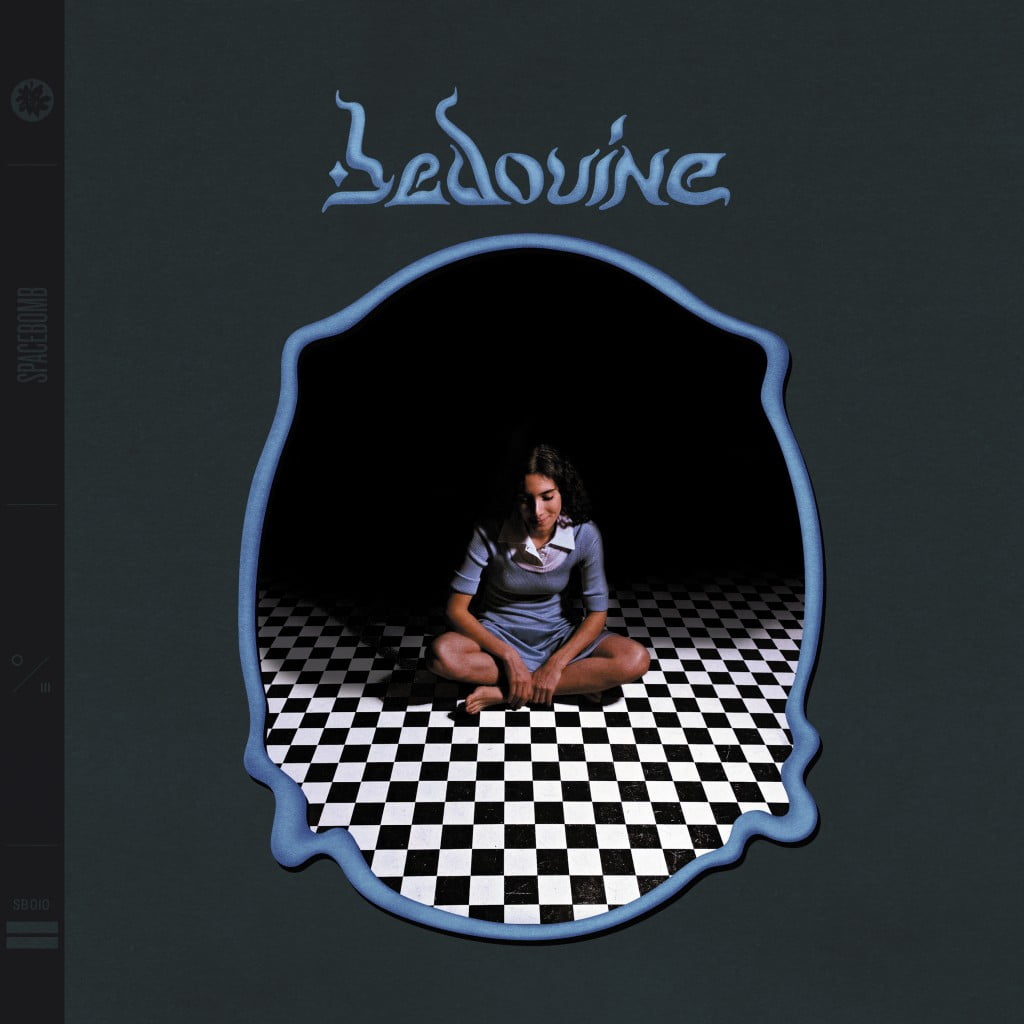
This is just one interpretation, but I think of it as a love song both in terms of what one offers to oneself.
I love that. Someone brought up with me that it’s not as common to hear a woman singing about a rich internal life. I didn’t even think of it that way, but it must’ve found its way in there. As a woman, maybe, I feel a little bit protective of myself in a way that I don’t want to be perceived as “less than.” I also don’t want to overcompensate, but sometimes you feel you have to. I think it does say that: “I’m happy with myself, and if you can’t see me as an equal, then there’s no reason to continue.”
Yes. Also, too, I think society doesn’t know what to do with women who are out in public and visibly, comfortably alone. So I love that you’ve managed to cultivate this rejoinder to that.
Yeah, it is. And it’s a pretty passionate claim, too.
Another love song that struck me is “Heart Take Flight.”
I’m so happy you feel that way because no one has asked me about that song.
How much would you say that your movement has made you guarded to a point where you have to remind yourself to enjoy those romantic, vulnerable moments when you find them?
Absolutely. That song is like a memo to myself. I wrote it when I first fell in love with someone, and I thought to myself, “I can’t forget the way this feels.” You hear about love or feelings fading or building an immunity to it, and I wanted to remember the way I was feeling at that moment.
A reminder and also a permission, which I thought so haunting.
Yes! I haven’t had to talk about this song, so I’m still sorting this out, but, yeah, it is about giving my heart permission to let go a little bit. And it is a counterpart to “Solitary Daughter.” Like a bookend.
Also, what you were saying before about rootedness and the materialism it engenders — buying furniture — it also means attachments, and people can be part of that equation.
Yes, so to speak in terms of the song, “Back to You,” which is the third track, that is a song I wrote about having an instinct to leave Los Angeles, but staying for someone, so it all kind of connects, in a way. What I’m saying in that song is, “It always comes back to you. That’s why I’m here.” It doesn’t make a huge case or anything, really. It’s just more of an observational song. Taking in L.A. and trying to understand everyone’s place there and what they do, and being confused about it sometime. Taking note that I’m there for that reason, and trying to be okay with that.
Definitely, and what we were discussing before about choosing a place. There’s freedom in that action, but it can be overwhelming in how you define and create “home.” Turning to the cover, I couldn’t help thinking of Alice in Wonderland. What was the intention behind that?
That was not intentional. Yeah, a lot of people have said that ,and I totally see it, and it actually kinda works with this whole theme. That photo was taken from a series of photos that my friend Polly did. The floor — that was the studio we recorded the record in. Before, you could see the background, but the photo was more striking when we blacked out the background and brought the shadows down. We didn’t shoot it with the intention of it being the cover, but I started messing around with a lot of templates, and I was looking at Nick Drake’s cover of Bryter Layter, which I think is one of the most beautiful album covers, especially the color combinations, and that lavender with the bright orange, I thought was so cool. I didn’t want to take that, as much as I did the oval pendant.
As a frame.
Yes, I love that frame. I think it’s so sweet and elegant. I brought that idea to Robert Beatty. He lives in Lexington, Kentucky, and I’ve always been a fan of his work, but in the last two years he’s gotten some really big records, but thankfully he did it. He made it a little psychedelic. The thing about it, which also was not intentional, it looks like a book cover, especially with the Space Bomb banner. To help with the symmetry of the record, we extended the banner, so you’ll see it looks different than their other releases.
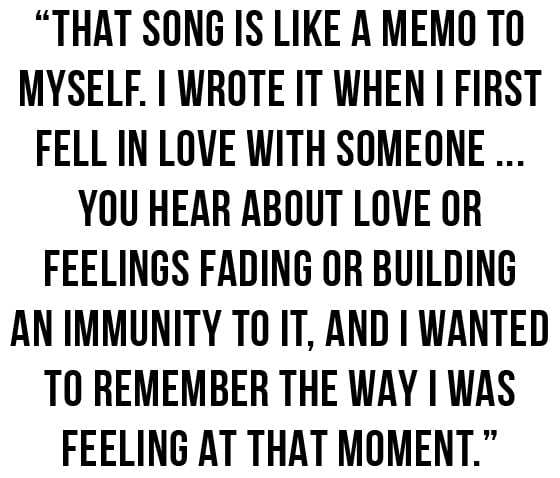
And here you also created such lovely space throughout the album.
We were 30 songs deep, actually. We were just recording bits and pieces and slices of time — this is over the course of the last three-and-a-half years. They inherently had so much space to them because nothing was over-produced. When Matthew became interested in the record, we cherry picked our 10 favorite songs, and because we were aware of their process and how they wanted to put arrangements down, it worked out where it was like, “Let’s not over-produce these songs. If anything, let’s give them more space to work with.” They had to finagle their arrangements, which is something they normally have in mind when they’re producing.
That would have been a curious way to go about shaping this as a record.
I was so nervous about it because I had so much time to grow attached to these songs exactly the way they were, and I also fell in love with the space. “Heart Take Flight” is the perfect example. I presented it to Matthew as an afterthought and he was pretty passionate about “Heart Take Flight” being on the record. At that point, Trey had already started writing the arrangements. We didn’t intend it to sound so Nick Drake-y, and so Gus had to counteract that with something different, which is why he chose to put the moog on it, so it became a little less traditional. I didn’t listen to a Nick Drake song and think, “I’m going to write this.” I just changed the tuning on my guitar and started writing that. At the time, I really liked the method of seeing how long I could stay on one chord for, which is what I did for “Solitary Daughter.” I didn’t see it as an issue, but Gus said we needed to back away from that.
It’s a haunting sound, akin to a finger running over the rim of a wineglass.
Yeah, it’s so round. I think it worked out because it leant itself to an otherworldly type of thing. That’s a reference I gave to Robert Beatty. This is a perfect example of what the artwork could do: Traditional and simple, but notes of otherworldliness.
All of which came across. It’s really striking altogether.
Thank you. I’m so in love with the artwork.
I’m excited because when you’re talking about having 30 songs and carving them down to 10, that means we get more albums in the future, right?
Oh man, if I wanted to, I already have the next two records written, but I do want to challenge myself to keep writing. I have such a backlog of stuff that I didn’t record.
Because she spent so much time between albums — eight years between her second and third, six between her fourth and fifth — Lucinda Williams has been assigned a reputation as a perfectionist, as though country music must be approached with the sonic exactitude of prog-rock. But the near-decade interim separating 1980’s Happy Woman Blues and 1988’s Lucinda Williams doesn’t indicate a maniacal pursuit of a specific vision, although these songs are as close to perfect as just about any country album of that decade. Instead, the Louisiana-born, Los Angeles-based singer/songwriter spent those years redefining her sound away from acoustic blues to something closer to country-rock, moving out of Texas for Southern California, and trying like mad to sell herself to a record label. Recording Lucinda Williams took less than a month. Getting somebody to give a shit took significantly longer.
As Williams has said, in the 1980s, she was perceived as too country for rock radio and too rock for country radio. Lucinda Williams continually writes and rewrites its own rules, with each song presenting a slightly different definition of what “country” and “rock” might be. “I Just Wanted to See You So Bad” opens the album with a bouncy drum beat and a bright guitar lick, with Williams rushing through that title phrase, jumbling the words together as though mid-sprint. It’s full of hope and intense desire, both echoed on the story-song “The Night’s Too Long” and the list of demands “Passionate Kisses.” The blues still informs her songwriting, albeit in different forms: “Am I Too Blue” adheres to the country blues setting, but “Changed the Locks” is something new for Williams, a low-down urban blues tune surprisingly lascivious in its harmonica riff and humorous in its lust and self-delusion. “I changed the lock on my front door so you can’t see me anymore,” she testifies. “And you can’t come inside my house, and you can’t lie down on my couch.” Few singers — including Tom Petty, who covered the song in 1996 — could draw so much sexual promise out of the word “couch.”
Like Wilco’s Yankee Hotel Foxtrot, Lucinda Williams has become symbolic of the old art-versus-commerce debate, a manifestation of the grievous oversight of major labels and radio programmers, held up as evidence that the business of music, by default, ignores good music in favor of marketable product (as though there’s no overlap). Released in fall 1988, the album became a cause célèbre in Nashville, particularly among female musicians: Patty Loveless covered “The Night’s Too Long” in 1990, Mary Chapin Carpenter enjoyed her biggest hit with “Passionate Kisses” in 1991, and Emmylou Harris sang “Crescent City” on Cowgirl’s Prayer in 1993. You could almost reconstruct the tracklist with excellent covers.
Generally perceived as much more conservative than the audience or the artists it ostensibly serves, in the late 1980s, country radio was only just shifting away from the gauzy nostalgia of neo-traditionalists and the last sputterings of legacy artists and moving toward the hat acts who would define the genre into the next decade. In the fall of 1988, when Lucinda Williams finally made it to record store shelves, Dwight Yoakam, Rosanne Cash, Tanya Tucker, and the Oak Ridge Boys all enjoyed number one country hits. Noted country eccentric Lyle Lovett enjoyed two gold records in 1988 and 1989. Mainstream country music has become a thread-bare strawman for alt-country and roots audiences, but it wasn’t just the industry’s prudishness that kept Lucinda Williams off the charts and the playlists, despite that story’s persistence over the years.
It wasn’t something in the lyrics, either. There were rumors that radio executives objected to the prurience of the line, “His back’s all soaked with sweat,” sure to send housewives into a tizzy, but “The Night’s Too Long” was soon a single for Loveless. Williams’ voice was cited as a potentially alienating factor, one that blurred its syllables around the edges, slurring its speech after too many cold Coronas in some lost honkytonk. Williams replaces the recognizable twang with something more idiosyncratic, something more rooted in geography, something that was, at the time (and definitely still is), as foreign to country radio as ouds and zithers. Lovett’s deadpan drawl and Yoakam’s Bakersfield barb were similarly iconoclastic, but they were guys in an industry that preferred women more easily manageable and malleable (which is not to dismiss the self-possession of Williams’ female contemporaries, but more to speak to the considerable feat of their success).
Ultimately, Lucinda Williams just wasn’t designed for radio. It wasn’t meant for the mainstream. It has become exactly what it was supposed to be: a cult record, a foundational document, the wellspring of a new strain of music that would eventually be labeled alt-country. The Jayhawks might have debuted two years earlier, and Uncle Tupelo might have named the magazine, but this album — more than any other — revealed the limitations of Nashville and its neglect of very large swathes of country music listeners. Williams staked out all new territory. She had had a fairly itinerant life, born in Lake Charles, Louisiana, but raised elsewhere. She’d lived in Arkansas with her father, the poet Miller Williams, then Texas, where she made two albums of tentative country blues that even her most avid fans don’t spin much anymore. Most of her 1980s were spent in Los Angeles, which is perhaps the most significant aspect of Lucinda Williams.
That city was a mecca for country music as early as the Great Depression, when itinerant Southerners and Midwesterners moved west looking for work. Singing cowboys proliferated throughout the 1930s and 1940s before they were eventually replaced by crooners and rock stars. The term “country-rock” was coined in Southern California, thanks to Gram Parsons and the Beau Brummels (who recorded the overlooked Bradley’s Barn with Owen Bradley in 1968). Around the same time, Bakersfield became a powerful force in country music; roughly two hours north of Los Angeles, the town supported more than its fair share of roadhouses and honkytonks, where country music was played on electric guitars with strong backbeats and where Buck Owens and Merle Haggard cut their teeth.
Williams might have appreciated those artists, but at least on her self-titled album, her sound never borrowed much from those scenes. Instead, Lucinda Williams sounds bound to a city that, in 1988, would have still been viewed by those back east as a den of crime and ersatz glamour — cocaine and liberalism, yuppies and punks. The city’s punk scene had somehow made room for twang, with X spiking their punk with rockabilly (and sharing stages with Dwight Yoakam) and Lone Justice sneaking out of the underground with “Ways to Be Wicked.” As Williams told Spin in 2016, “There was an actual really cool thing going on out in L.A. in the mid-‘80s, [acts] like the Long Ryders, the Lonesome Strangers, the Blasters, Rosie Flores, and X. I was just opening for bands, and a lot of labels were noticing me and would come to my gigs, but nobody would sign me; they all passed on me, even the smaller labels like Rhino and Rounder.” It took an English label to finally sign her.
To call Rough Trade a punk label would be to minimize the breadth of its catalog, which included a remarkable mix of industrial (Cabaret Voltaire), punk (Stiff Little Fingers), post-punk (the Pop Group), pop (the Smiths), and things in between (Panther Burns). The label opened an American office in 1987, with a mission to sign more U.S. acts. Still, Williams was a departure for the label — a risky bet that paid off. Lucinda Williams peaked at 39 on the Billboard album charts and spawned two EPs in 1989. Her next album would be released by an imprint of Elektra Records, the one after that by Mercury.
The portrayal of Williams as somehow outside the industry — as an alternative to the mainstream — persists today, perpetuated by the woman herself. Williams has continually distanced herself from what she described to Billboard as the “straighter country music industry of Nashville.” In response to that interview, Chuck Klosterman calls her out in Sex, Drugs, & Cocoa Puffs and predicts “Lucinda Williams’ music won’t matter in 20 years. Oh, she’ll be remembered historically, because the brainiacs who write pop reference books will always include her name under W. She’ll be a nifty signpost for music geeks. But her songs will die like softcover books filled with post-modern poetry, endorsed by Robert Pinsky and empty to everyone else. Lucinda Williams does not matter.”
As with so many Klosterman statements, it’s provocative, entertaining, and demonstrably untrue. Fourteen years later, Lucinda Williams still matters — as a songwriter routinely covered by artists in a range of genres, as an industry cautionary tale, as an alt-country figurehead, as an artist boldly reinventing herself on her most recent albums. And Lucinda Williams matters perhaps even more — not because we’re still talking about it 30 years later, but because no one is really from Los Angeles. At its heart, this is an album about small-town transplants in big cities, about Southern ex-pats far from home, and few artists have taken up that musical sensibility as confidently or as comfortably as Williams, an LA native displaced in L.A.
“The Night’s Too Long” makes the theme literal, describing a young woman who sells her belongings to move to where things are actually happening. Williams gives her a name, a job, and a hometown in the song’s first line: “Sylvia was working as a waitress in Beaumont.” She moves away to “get what I want,” which might as well be the laundry list of demands on “Passionate Kisses.” Home and travel and loneliness and melancholy suffuse these songs. “Crescent City” recounts a trip back to Louisiana, where she — maybe Lucinda herself, or perhaps Sylvia — hangs out with her family, listens to zydeco, takes rides in open cars. “Let’s see how these blues’ll do in a town where the good times stay,” she sings, as Doug Atwell’s fiddle solo winds its way through those familiar backroads and across that “longest bridge” over Pontchartrain. It’s a poignant song for any listener who doesn’t live where they grew up. It’s the sound of rediscovering the joy and reassurance of home, a theme that ultimately transcends genre, industry, and even performer.
Henry Diltz is one of the greatest photographers alive today.
His work in rock ‘n’ roll — specifically Los Angeles rock — stands the test of time and proves how important the visual aesthetic attached to music becomes for the artist, the listener, and the culture.
I grew up listening to albums like Sweet Baby James; Crosby, Stills, and Nash; and Desperado, and it’s impossible to imagine these albums without picturing the album art and photography. When my family moved to Southern California in the early ’90s, these images were compounded by my own real-life interaction with the California aesthetic, and those experiences created emotions that ultimately shaped my own sound.
When Henry reached out, I was immediately inspired to do something special that could incorporate my connection to L.A. with Henry’s casual approach. It dawned on me that, while I’d already done photos that point to my hometown from a variety of locales (DTLA, Elysian Park, Joshua Tree, etc.), I had yet to shoot at the beach. We chose Venice Beach for its scenic waterfront juxtaposed against the eclectic boardwalk and “locals only” culture, and I couldn’t be happier with how it turned out. I consider myself incredibly fortunate to collaborate with such a nuanced artist at the top of his game. — Sam Outlaw
